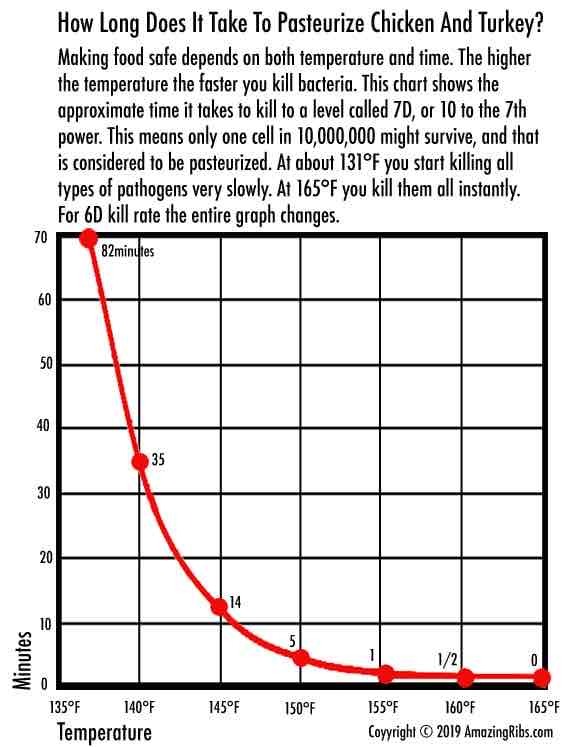For those of us living after the 19th century 55 degrees is the amount of time to start killing pathogens, 60 ℃ needed to take 35 minutes, down to 14 minutes at 63 ℃, 66 ℃ is 5 min, 69 ℃ is 1 min, 72 ℃ is just half a minute, and 74 ℃ is instantaneous.
Probably worth adding that just putting a piece of chicken in the oven at 100 ℃ is obviously not going to kill all bacteria. It takes time for the heat to be transferred from the oven to the room-temperature (or colder) internals of the chicken.
